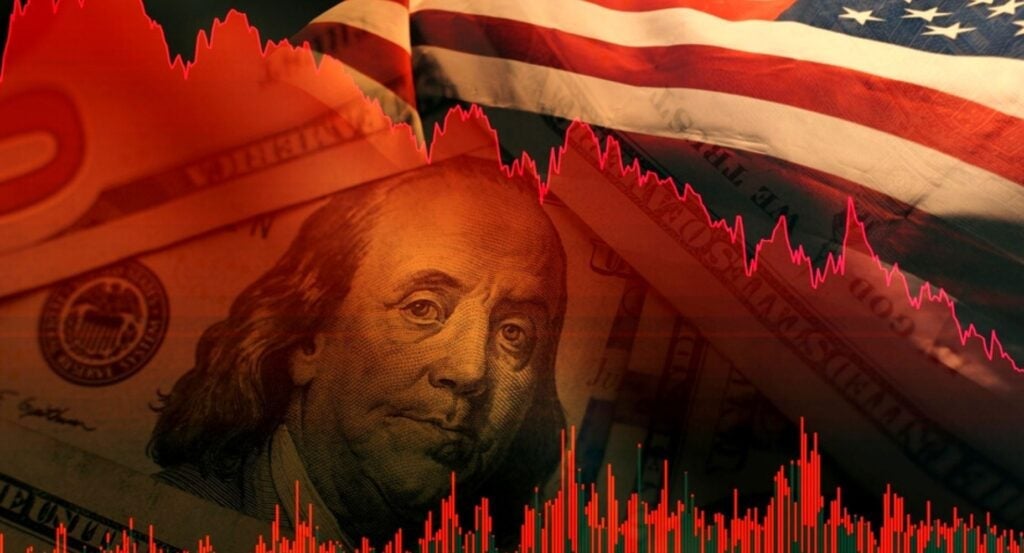
While the tariffs announced by President Donald Trump are already dragging markets deep into the red, early signs of strain are beginning to emerge in corporate health indicators, raising concerns that the services sector, the backbone of the U.S. economy, may no longer be able to sustain growth.
The Institute for Supply Management’s Purchasing Managers’ Index (PMI) survey revealed a marked deterioration in sentiment among service-sector businesses last month, further igniting investor concerns on the state of the economy.
ISM Services PMI Falls More Than Expected
The ISM Services PMI fell sharply to 50.9% in March, down from 53.5% in February, which had been the highest reading since August 2023. The decline was steeper than expected, with forecasts pointing to a more modest drop to 53%.
This was the lowest reading since December and only marginally above the 50% threshold that separates expansion from contraction.
The Business Activity Index, a gauge of current output, actually strengthened to 55.9% in March from 54.4%, extending its expansion streak to 58 consecutive months. However, forward-looking indicators showed weakness.
The New Orders Index dropped to 50.4% from 52.2%, suggesting waning customer demand, while the Backlog of Orders Index slipped to 45.6%, down from 47.7%, marking a third straight month of contraction.
Employment Index Craters, Hiring Freezes Emerge
The most striking component of the report was the collapse in the Employment Index, which plunged to 46.2% from 53.9%—a 7.7 percentage point drop and a nine-month low, marking its first contraction in six months.
That’s a red flag for a services sector that comprises nearly 80% of U.S. private-sector employment. The reading suggests that companies are either slowing down hiring, cutting jobs outright, or scaling back hours amid economic uncertainty.
In the ISM’s qualitative commentary, respondents in professional, scientific and technical services reported a loosening labor market. They cited easier hiring conditions, declining staff turnover and a more abundant supply of high-quality job candidates.
One participant said, “Have been able to hire high-quality employees to fill open positions,” while another described a “conservative view of the job market and economy,” noting they are “not adding head count or resources.”
Now, 19.2% of respondents anticipate reducing employment, up from 15% in February.
Inflation Still Hot Despite Easing Slightly
The Prices Index registered at 60.9%, down modestly from 62.6% in February, but still above the 60% mark for a fourth straight month. That signals input cost pressures remain elevated, even as demand cools.
The ISM also noted a surge in mentions of tariff-related cost pressures, citing “a significant increase this month in the number of respondents reporting cost increases due to tariff activity.”
Market Reactions: Stocks Fall, Traders Eye Four Rate Cuts
The weaker-than-expected ISM Services PMI intensified the tariff-driven selloff on Wall Street, dragging major U.S. equity indexes to new session lows.
The S&P 500 index – as trakced by the SPDR S&P 500 ETF Trust SPY – fell 4.1% to 5,440 points, eyeing the worst session since September 2022.
The Nasdaq 100 – tracked by the Invesco QQQ Trust, Series 1 QQQ – sank 4.4%, hitting a 7-month low.
Shares of Apple Inc. AAPL were down 8.5%, on track for their worst day since March 2020.
Similarly, major banks like Bank of America Corp. BAC and Goldman Sachs Group Inc. GS fell 8.7% and 9.10%, eyeing their worst days in five years.
Ralph Lauren RL was the S&P 500’s worst performer for the day, down 17%, also heading for its worst session since March 2020.
In money markets, traders ramped up bets on Federal Reserve rate cuts following the downbeat economic data. According to the CME FedWatch Tool, the probability of four 25-basis-point cuts by December 2025 surged to as high as 67%.
The shift in expectations triggered a sharp selloff in the U.S. dollar, which plunged 2.1%—its steepest single-day drop since November 2022.
Read now:
Photo: Shutterstock
© 2025 Benzinga.com. Benzinga does not provide investment advice. All rights reserved.



